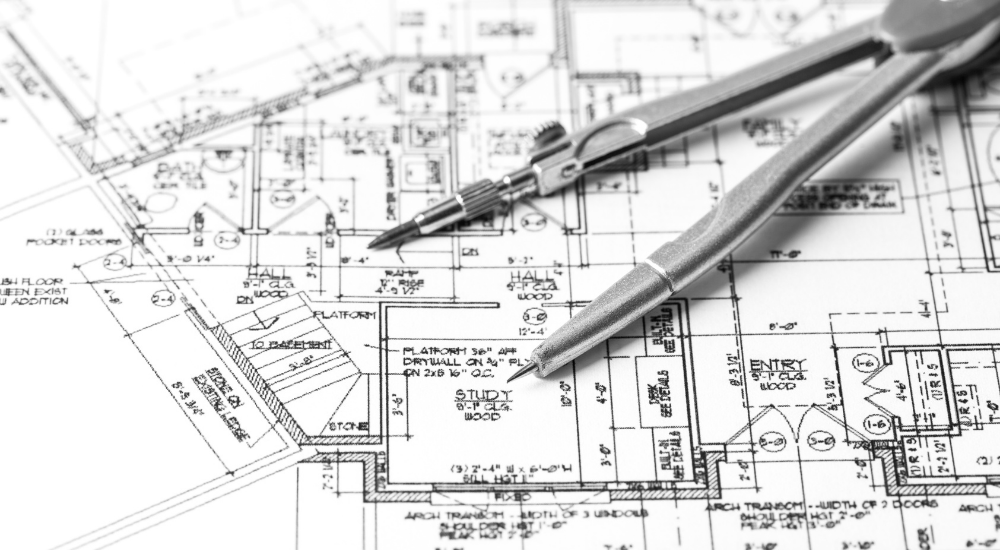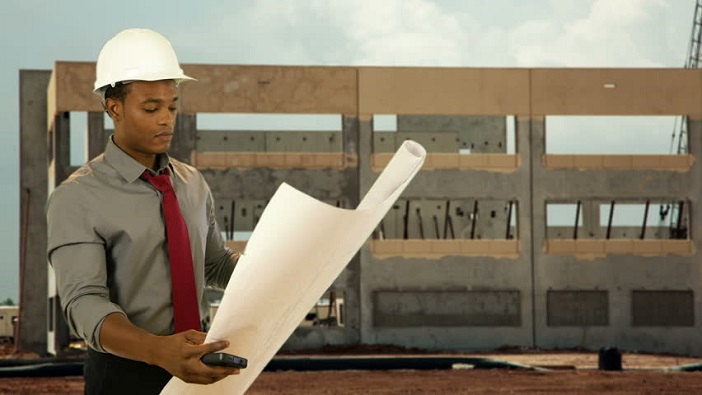Architect Recommended Software for 3D Modeling
Architect Recommended Software for 3D Modeling
Blog Article
Understanding the Diverse Job Paths Available for Aspiring Architect
As a hopeful Architect, you have a world of career courses waiting for you. Whether you're attracted to standard architecture or the subtleties of lasting design, there's a specific niche that straightens with your rate of interests.
Typical Style: Creating Frameworks and structures
Traditional architecture concentrates on creating buildings and structures that mix functionality with aesthetic appeal. As you explore this area, you'll value the detailed balance in between type and function. You'll discover to draw motivation from historic designs, incorporating aspects like symmetry, products, and workmanship. Your styles can show social heritage, showcasing regional practices while fulfilling contemporary needs.
You'll develop skills in drafting, model-making, and site analysis, allowing you to picture and connect your ideas properly. Engaging with customers, you'll require to understand their vision and translate it into feasible layouts.
In addition, developing codes and sustainability practices are vital in your work, ensuring your structures are secure and ecologically friendly. As you grow in your profession, you'll discover chances in household, business, and even remediation jobs, each offering special difficulties. Accepting conventional style leads the means for a fulfilling career that pays tribute to the past while shaping the future.
Urban Planning: Shaping Areas and Public Spaces
As an aspiring Architect, you can play an important function as a metropolitan coordinator, transforming exactly how areas work and engage. By utilizing neighborhood engagement strategies, you'll assure that locals have a voice in forming their atmosphere. Plus, integrating lasting style concepts will certainly aid produce rooms that not only satisfy today's needs yet likewise protect the future.
Duty of Urban Planners
While many might assume of engineers as the sole enthusiasts behind structures, city organizers play an essential function in shaping the wider landscape of communities and public spaces. By working together with different stakeholders, you'll help make parks, transport systems, and property locations that promote social interaction and ease of access. Your competence in spatial layout and community dynamics enables you to envision future development while protecting social heritage.
Area Engagement Methods
Efficient area interaction approaches are important for urban coordinators to assure that the voices of citizens are heard and valued in the planning procedure. To cultivate meaningful dialogue, you need to focus on open online forums and workshops where neighborhood participants can reveal their concepts and issues. Use studies and social networks to reach a broader audience, making sure varied perspectives are included. Working together with neighborhood organizations can boost depend on and facilitate much deeper connections. It's important to offer clear information regarding decision-making procedures and suggested projects, permitting residents to feel informed and encouraged. By actively listening and integrating responses, you'll create areas that show the neighborhood's demands, eventually leading to more lasting and effective metropolitan atmospheres. Embrace openness and continual discussion for long lasting effect.
Lasting Style Principles
When designing metropolitan spaces, including lasting style principles is critical for producing environments that thrive both ecologically and socially. Think about integrating environment-friendly areas, like gardens and parks, to enhance biodiversity and improve air quality.
Creating with water preservation in mind is additionally vital-- consider rain gardens and permeable surfaces to handle stormwater. Entailing neighborhood members throughout the preparation process warranties that the spaces you produce fulfill their demands and motivate social interaction. By welcoming these principles, you'll add to vivid, lasting urban landscapes that profit every person.

Landscape Style: Creating Lasting Exterior Settings
As you check out landscape architecture, you'll find vital layout concepts that develop beautiful and practical outdoor rooms. Lasting techniques play an important role in making certain these environments prosper while reducing environmental influence. And also, you'll find a variety of job possibilities that enable you to make a genuine distinction in exactly how people connect with nature.
Style Principles in Landscape
Recognizing design principles in landscape style is important for developing sustainable outside settings that integrate with nature. You'll require to consider aspects like proportion, range, and equilibrium to guarantee your designs feel natural and inviting. Incorporating native plants not only boosts biodiversity however additionally lowers water use, making your landscape resistant. Consider the circulation of space and how individuals engage with it; pathways and seating locations must invite expedition and relaxation. Additionally, take notice of seasonal modifications, creating with materials that match the environments year-round (Architect). By prioritizing sustainability and looks, you can create exterior areas that improve the area and promote well-being. Accepting these concepts will establish a strong foundation for your occupation in landscape style.
Sustainable Practices Summary
Lasting methods in landscape style not only concentrate on aesthetic appeals however additionally focus on environmental health and resource preservation. By integrating indigenous plants, you boost biodiversity and reduce the requirement for chemical plant foods and chemicals. Executing effective irrigation systems aids save water and lessens runoff, protecting close-by ecosystems. You can make spaces that advertise soil health and wellness, such as using natural materials and exercising permaculture principles. Furthermore, including environment-friendly infrastructure, like rain gardens and porous sidewalks, help in stormwater monitoring and reduces city heat. You add to a healthier world and supply areas that promote community link when you produce outdoor settings with sustainability in mind. Eventually, these methods assure your designs benefit both individuals and the setting for many years ahead.
Job Opportunities Exploration
With a solid structure in lasting methods, landscape style offers a range of occupation paths that enable you to make a meaningful effect on the environment. Urban coordinators commonly work together with landscape engineers to create green areas in metropolitan setups, boosting city livability. If you're passionate about education and learning, think about becoming a landscape architecture instructor, motivating future generations.
Sustainable Style: Concentrating on Eco-Friendly Practices
As you discover your occupation in style, embracing green practices can set you apart in an affordable field. Sustainable layout concentrates on creating structures that decrease environmental influence while enhancing resident health. By including sustainable materials, energy-efficient systems, and sustainable structure strategies, you'll contribute to a greener future.
Start by gaining expertise of environment-friendly qualifications like LEED or BREEAM, which can boost your qualifications. Take into consideration just how all-natural light, ventilation, and thermal performance can enhance layout. Work together with engineers and ecological professionals to introduce options that reduce waste and preserve sources.
Don't fail to remember the importance of area participation-- engaging local stakeholders can motivate designs that balance with the environment. As customers increasingly focus on sustainability, your proficiency in environmentally friendly methods will certainly not just attract tasks but additionally satisfy your enthusiasm for responsible design. Accept this important aspect of the profession, and enjoy your job flourish.
Historic Preservation: Securing and Bring Back Cultural Heritage
While you begin on your building journey, consider the crucial duty of historic conservation in maintaining our cultural heritage. This area concentrates on the defense and repair of substantial buildings, sites, and frameworks that tell the his explanation tales of our past. By taking part in historic conservation, you'll help secure the building legacy that forms area identity.
As a historical conservation Architect, you'll examine historic relevance and examine the condition of frameworks. You'll work carefully with historians and guardians to ensure authentic reconstruction strategies are used. This profession path enables you to blend creative thinking with research, allowing you to make remedies that value original products and workmanship.
Your job not only adds to sustainability by reusing existing buildings yet additionally cultivates a feeling of pride within neighborhoods. Embracing this path will certainly help you end up being a guardian of history, maintaining the tales and aesthetic appeals that improve our lives.
Interior Design: Enhancing Indoor Spaces
Historical conservation and interior architecture both share a commitment to enhancing the built environment, but they concentrate on various elements. While historical preservation emphasizes preserving a framework's historic and cultural value, interior design nos in on optimizing interior rooms for performance and aesthetics.
As an visit the website ambitious Architect, you'll find that indoor style enables you to mix creative thinking with technical abilities. You'll develop rooms that not only look good but additionally advertise convenience and effectiveness. This field entails recognizing exactly how light, shade, and products engage within a room, influencing mood and usability.
You'll work with various projects, from domestic homes to industrial offices, making certain that each atmosphere meets the demands of its passengers. By prioritizing user experience, you can change insides into functional and inspiring areas, making a considerable influence on how people interact with their surroundings. Embrace the opportunity to boost interior settings and form the means people live and function.
Industrial Layout: Combining Capability With Aesthetic Appeals
Commercial layout plays a crucial role in developing products that perfectly mix looks with performance, making certain that what you make use of day-to-day is not only visually attractive yet likewise functional. As a hopeful Architect, you can immerse on your own in this field, concentrating on creating everything from furnishings to customer electronic devices. Your job involves understanding user needs, products, and manufacturing processes, enabling you to produce innovative options that improve daily experiences.
In industrial layout, you'll commonly team up with marketing professionals, makers, and engineers, making sure that your layouts are not only stunning but also viable. You'll find out to stabilize type and feature, prioritizing usability without sacrificing design. By developing your skills in laying out, 3D modeling, and prototyping, you'll be well-appointed to bring your ideas to life. This occupation course uses a dynamic setting where imagination fulfills practicality, making it a rewarding selection for engineers curious about shaping the products of tomorrow.
Regularly Asked Concerns
What Educational Credentials Do I Need to Come To Be a Designer?
To end up being an architect, you'll require an expert level in design, usually a Bachelor's or Master's. Additionally, you'll need to finish a teaching fellowship and pass the Architect Enrollment Evaluation to exercise legally.
Are There Qualification Demands for Different Building Occupation Paths?
Yes, there're accreditation click demands for different architectural courses. Architect. You'll need to pass exams, complete teaching fellowships, and sometimes seek specialized training, depending upon your picked focus, like landscape style, urban layout, or historical preservation
What Software Program Skills Are Crucial for Designers Today?

Just How Can I Gain Practical Experience While Examining Architecture?
You can obtain sensible experience by interning at building firms, joining style competitors, volunteering for community jobs, or working together with classmates on real-world jobs. These chances boost your skills and build valuable connections in the sector.
What Task Opportunities Exist Outdoors Conventional Style Firms?
You can check out various task opportunities outside standard style firms, like city planning, indoor design, landscape design, construction administration, property development, and even functions in sustainability consulting. Each deals unique difficulties and incentives.
Whether you're attracted to traditional design or the nuances of sustainable layout, there's a specific niche that straightens with your interests.When developing city areas, including sustainable style concepts is essential for producing settings that grow both ecologically and socially.As you explore landscape design, you'll find crucial layout principles that create useful and beautiful outdoor spaces.Comprehending style principles in landscape design is necessary for developing lasting exterior settings that balance with nature.In commercial layout, you'll often collaborate with engineers, marketing professionals, and makers, ensuring that your layouts are not just stunning however also viable.
Report this page